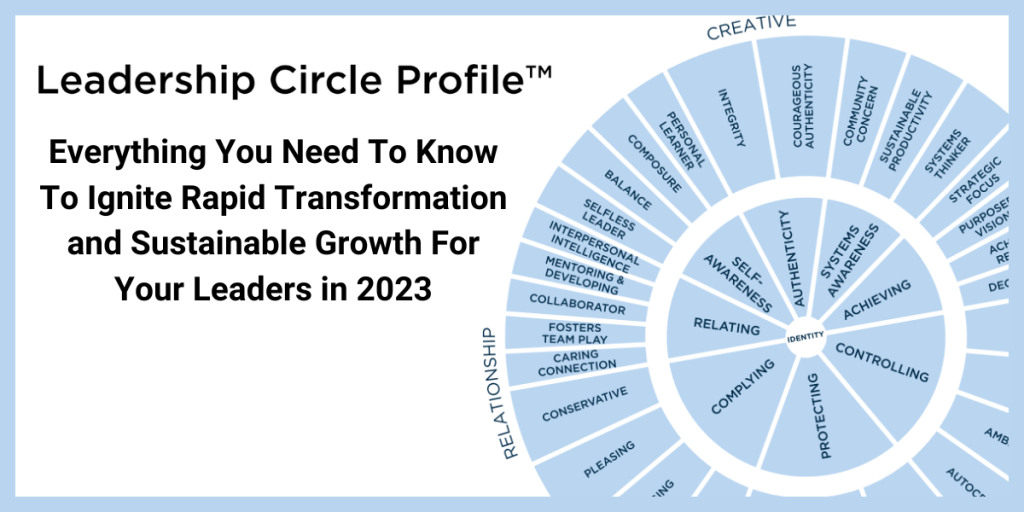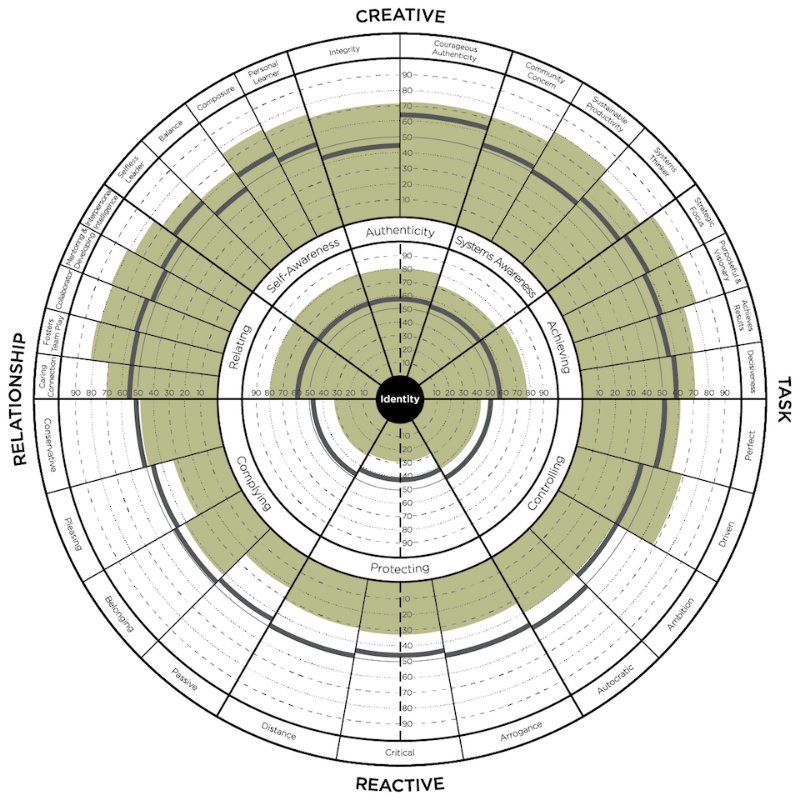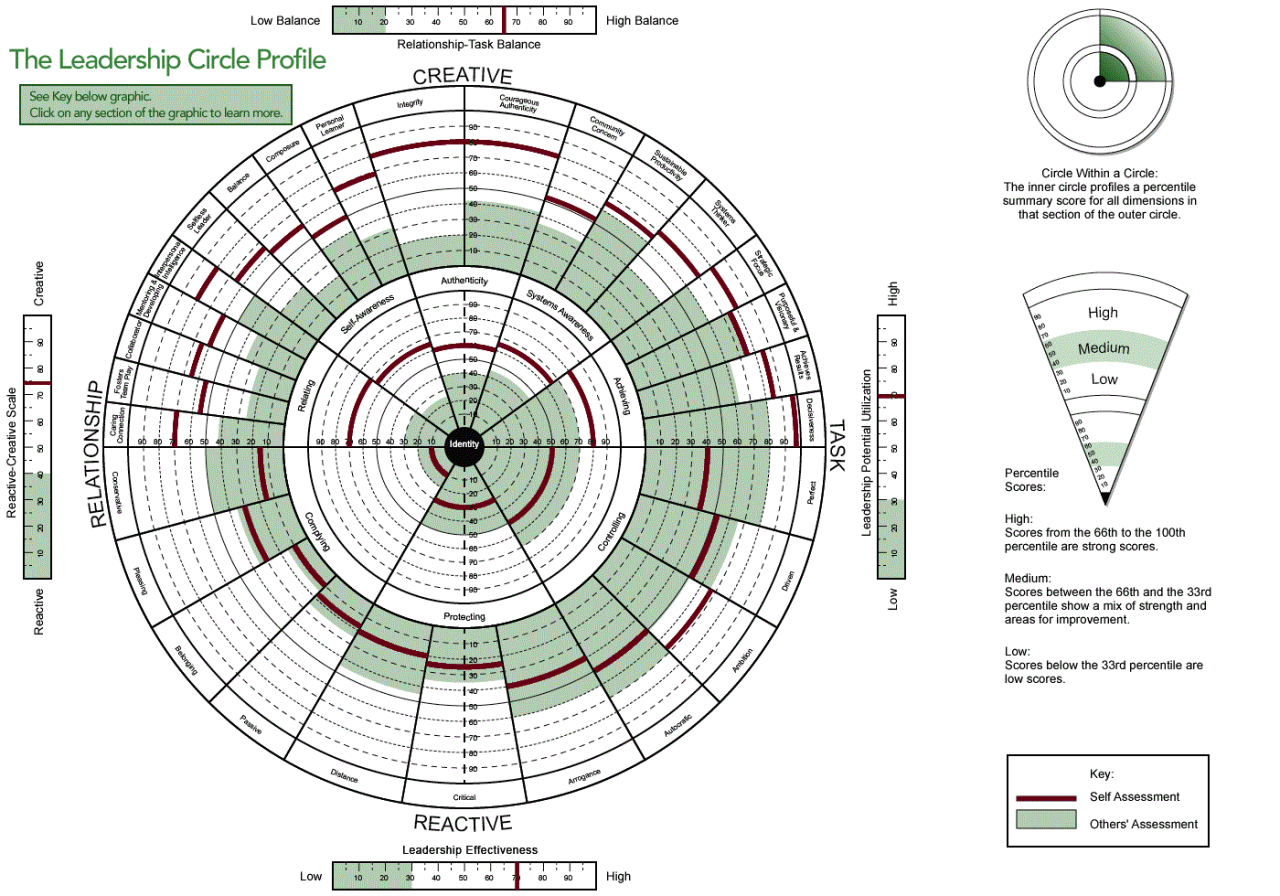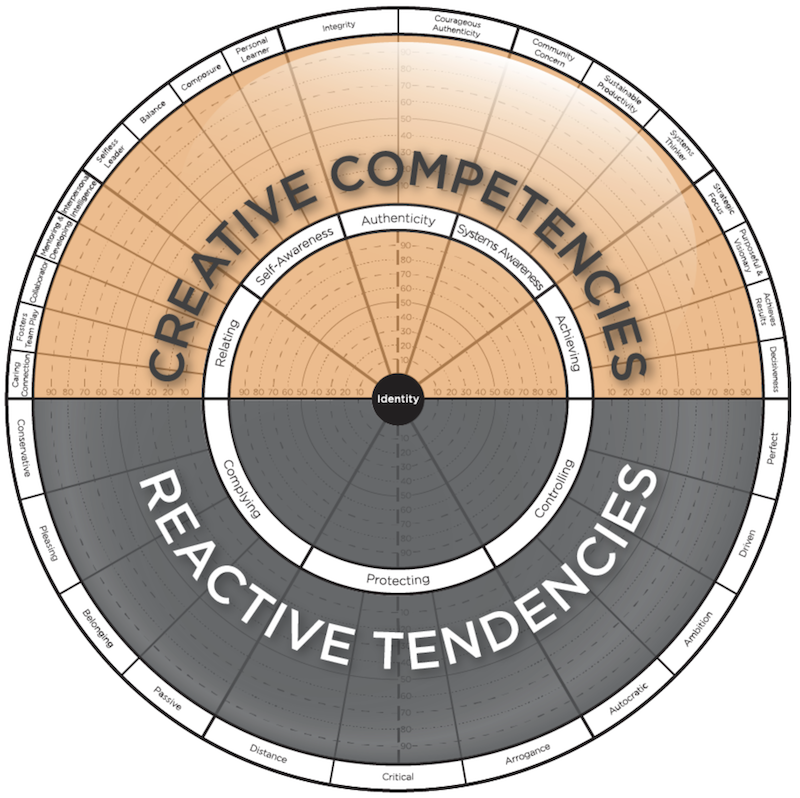Step into the realm of leadership development with The Leadership Circle Profile, a transformative tool that unlocks the potential of leaders at all levels. This comprehensive assessment provides a deep dive into individual leadership styles, enabling organizations to cultivate exceptional leaders who drive success.
The Leadership Circle Profile offers a holistic approach to leadership development, empowering leaders to understand their strengths, weaknesses, and areas for growth. By harnessing this knowledge, organizations can tailor development plans that maximize leadership effectiveness and organizational performance.
Understanding the Leadership Circle Profile

The Leadership Circle Profile (LCP) is a 360-degree assessment tool that measures an individual’s leadership style and effectiveness. It is based on the premise that there are seven levels of leadership development, each with its own unique characteristics and challenges.
Key Components of the LCP
The LCP consists of two main components: a self-assessment and a 360-degree assessment. The self-assessment asks individuals to rate themselves on a variety of leadership behaviors and competencies. The 360-degree assessment gathers feedback from individuals’ colleagues, supervisors, and direct reports on their leadership style and effectiveness.
Levels of Leadership Development
The LCP defines seven levels of leadership development:
- Level 1: Reactive– Leaders at this level are focused on their own survival and needs. They are reactive to events and have difficulty taking responsibility for their actions.
- Level 2: Ego-Centric– Leaders at this level are focused on their own ego and power. They are often competitive and aggressive, and they have difficulty working with others.
- Level 3: Achievement-Oriented– Leaders at this level are focused on achieving results. They are often driven and ambitious, but they can also be ruthless and manipulative.
- Level 4: Collaborative– Leaders at this level are focused on building relationships and working with others. They are often empathetic and supportive, and they have a strong commitment to their team.
- Level 5: Systems Thinker– Leaders at this level are able to see the big picture and understand how different parts of an organization work together. They are often strategic and visionary, and they have a strong commitment to continuous improvement.
- Level 6: Servant Leader– Leaders at this level are focused on serving others. They are often humble and selfless, and they have a strong commitment to making a positive difference in the world.
- Level 7: Alchemical Leader– Leaders at this level are able to transform themselves and others. They are often wise and compassionate, and they have a deep understanding of human nature.
Uses of the LCP
The LCP can be used to assess and develop leaders in a variety of ways. It can be used to:
- Identify an individual’s leadership strengths and weaknesses
- Create a personalized development plan
- Track progress over time
- Compare an individual’s leadership style to others in their organization
- Identify potential leadership derailers
Applying the Leadership Circle Profile
Applying the Leadership Circle Profile involves a systematic process of administering, interpreting, and utilizing the results to enhance leadership capabilities. Let’s explore the steps involved:
Administering the Profile
- Provide individuals with the Leadership Circle Profile assessment, typically an online questionnaire.
- Ensure a confidential and secure environment for completing the assessment.
- Allow ample time for individuals to complete the assessment thoughtfully.
Interpreting the Profile
- The Leadership Circle Profile generates a comprehensive report that includes:
- Leadership Circle graph: A visual representation of an individual’s leadership capabilities.
- Behavioral Competencies: Specific behaviors associated with each leadership dimension.
- Developmental Needs: Areas where an individual can enhance their leadership effectiveness.
- A qualified facilitator or coach can assist in interpreting the report and providing insights.
Using the Profile for Improvement
- Identify areas for improvement by examining the Developmental Needs section of the report.
- Focus on developing specific behaviors associated with the target areas.
- Set realistic and achievable goals for improvement.
Creating a Development Plan, The leadership circle profile
- Based on the identified areas for improvement, create a development plan that Artikels:
- Specific actions to be taken.
- Timeline for implementation.
- Resources and support required.
- Involve the individual, their manager, and/or a coach in the development plan creation.
- Monitor progress and make adjustments to the plan as needed.
Benefits and Limitations of the Leadership Circle Profile

The Leadership Circle Profile (LCP) offers a comprehensive and in-depth assessment of leadership capabilities, but like any tool, it has its benefits and limitations.
The LCP provides a holistic view of an individual’s leadership style, strengths, and areas for development. It focuses on both the inner and outer aspects of leadership, including personal values, motivations, and interpersonal skills.
Benefits
- Comprehensive assessment:The LCP covers a wide range of leadership competencies, providing a comprehensive view of an individual’s leadership capabilities.
- Focus on individual development:The LCP is designed to help individuals identify their strengths and areas for improvement, fostering personal and professional growth.
- Actionable insights:The LCP provides specific recommendations for development, helping individuals create targeted action plans to enhance their leadership skills.
Limitations
- Reliance on self-reporting:The LCP relies heavily on self-reporting, which can be subject to bias and inaccuracies.
- Potential for bias:The LCP’s interpretation and recommendations can be influenced by the biases of the facilitator or assessor.
- Cost and time investment:The LCP can be expensive and time-consuming, requiring significant investment from both the individual and the organization.
Comparison to Other Tools
The LCP is a valuable tool for leadership assessment, but it is not the only one available. Other tools, such as the Myers-Briggs Type Indicator (MBTI) and the Emotional Intelligence Inventory (EQ-i), offer different perspectives on leadership capabilities.
The MBTI focuses on personality preferences, while the EQ-i assesses emotional intelligence. These tools can provide complementary insights into leadership, but they do not offer the same comprehensive assessment as the LCP.
Case Studies and Applications

The Leadership Circle Profile (LCP) has been widely used in various organizational contexts to enhance leadership development and organizational effectiveness. Here are some case studies and applications that demonstrate its impact:
Case Study: Global Manufacturing Company
A global manufacturing company implemented the LCP to assess the leadership capabilities of its senior executives. The profile identified areas for improvement, such as communication skills, emotional intelligence, and strategic thinking. Based on these insights, the company designed targeted development programs that significantly enhanced the leadership abilities of its executives, leading to improved decision-making, increased employee engagement, and better financial performance.
Case Study: Nonprofit Organization
A nonprofit organization used the LCP to evaluate the leadership styles of its managers. The profile revealed that many managers were operating in a reactive and defensive manner, which hindered effective collaboration and innovation. The organization implemented a coaching program based on the LCP findings, which helped managers develop more proactive and empowering leadership styles.
This resulted in improved teamwork, increased employee motivation, and enhanced organizational outcomes.
Best Practices for Implementation
To effectively implement the LCP in different organizational contexts, consider the following best practices:
Tailor to Organizational Needs
Customize the LCP implementation to align with specific organizational goals and challenges.
To fully grasp the nuances of the Leadership Circle Profile, consider pursuing an executive leadership masters program. These specialized programs delve into the intricacies of leadership, empowering you to unlock your potential and effectively guide your team. By enhancing your understanding of the Leadership Circle Profile, you’ll gain invaluable insights into your leadership style and its impact on your organization.
Involve Key Stakeholders
Engage leaders, HR professionals, and employees in the implementation process to ensure buy-in and support.
Provide Feedback and Coaching
Offer personalized feedback to individuals based on their LCP results and provide ongoing coaching to support their development.
Create a Culture of Learning
Foster a culture that values learning and continuous improvement, encouraging individuals to apply LCP insights in their daily work.
Measure and Evaluate Impact
Track progress and evaluate the impact of the LCP on leadership development and organizational performance using metrics such as employee engagement, customer satisfaction, and financial results.
The Leadership Circle Profile offers a valuable framework for understanding your leadership style and areas for growth. To enhance your leadership capabilities, consider pursuing a strategic leadership masters program. These programs provide a comprehensive understanding of strategic thinking, decision-making, and organizational change, complementing the insights gained from the Leadership Circle Profile.
Advanced Applications of the Leadership Circle Profile

The Leadership Circle Profile (LCP) offers advanced applications beyond individual development. It can be used for team development, succession planning, and integration with other leadership development programs.
The Leadership Circle Profile is a valuable tool for understanding your leadership style. By identifying your strengths and weaknesses, you can develop strategies to improve your effectiveness as a leader. If you’re interested in developing your leadership skills in an organizational setting, consider exploring FBLA Organizational Leadership.
This program provides you with the opportunity to learn about different leadership styles, develop your communication skills, and build your confidence as a leader. By combining the insights from the Leadership Circle Profile with the practical experience gained through FBLA Organizational Leadership, you can significantly enhance your leadership capabilities.
Team Development
LCP provides insights into team dynamics and identifies areas for improvement. By comparing individual profiles, teams can understand their strengths, weaknesses, and potential blind spots. This enables them to work together more effectively, resolve conflicts, and enhance team performance.
Succession Planning
LCP assists organizations in identifying and developing future leaders. By assessing the leadership potential of candidates, companies can make informed decisions about succession planning. The profile highlights areas where individuals need further development and provides a roadmap for growth.
Integration with Other Programs
LCP can be integrated with other leadership development programs to enhance their effectiveness. For instance, it can be used as a pre-assessment to identify areas for development or as a post-assessment to measure progress. By combining LCP with other programs, organizations can create a comprehensive and tailored development experience for their leaders.
Key Differences between LCP Levels
The LCP has three levels of assessment:
| Level | Key Differences |
|---|---|
| Reactive | – Reactive and defensive
|
| Creative | – More open and creative
|
| Generative | – Highly self-aware and generative
|
Epilogue: The Leadership Circle Profile
The Leadership Circle Profile stands as a cornerstone for effective leadership development. Its ability to assess and guide leaders on their growth journey makes it an invaluable asset for organizations seeking to build a strong and capable leadership pipeline. By embracing the insights provided by this transformative tool, organizations can unlock the full potential of their leaders and drive lasting success.
Key Questions Answered
What is the purpose of The Leadership Circle Profile?
The Leadership Circle Profile is designed to assess and develop leadership capabilities by providing insights into an individual’s leadership style, strengths, weaknesses, and areas for growth.
How is The Leadership Circle Profile administered?
The Leadership Circle Profile is typically administered online and takes approximately 45 minutes to complete. It consists of a series of questions that explore various aspects of leadership behavior.
What are the benefits of using The Leadership Circle Profile?
The Leadership Circle Profile offers several benefits, including a comprehensive assessment of leadership capabilities, personalized development plans, and improved self-awareness for leaders.